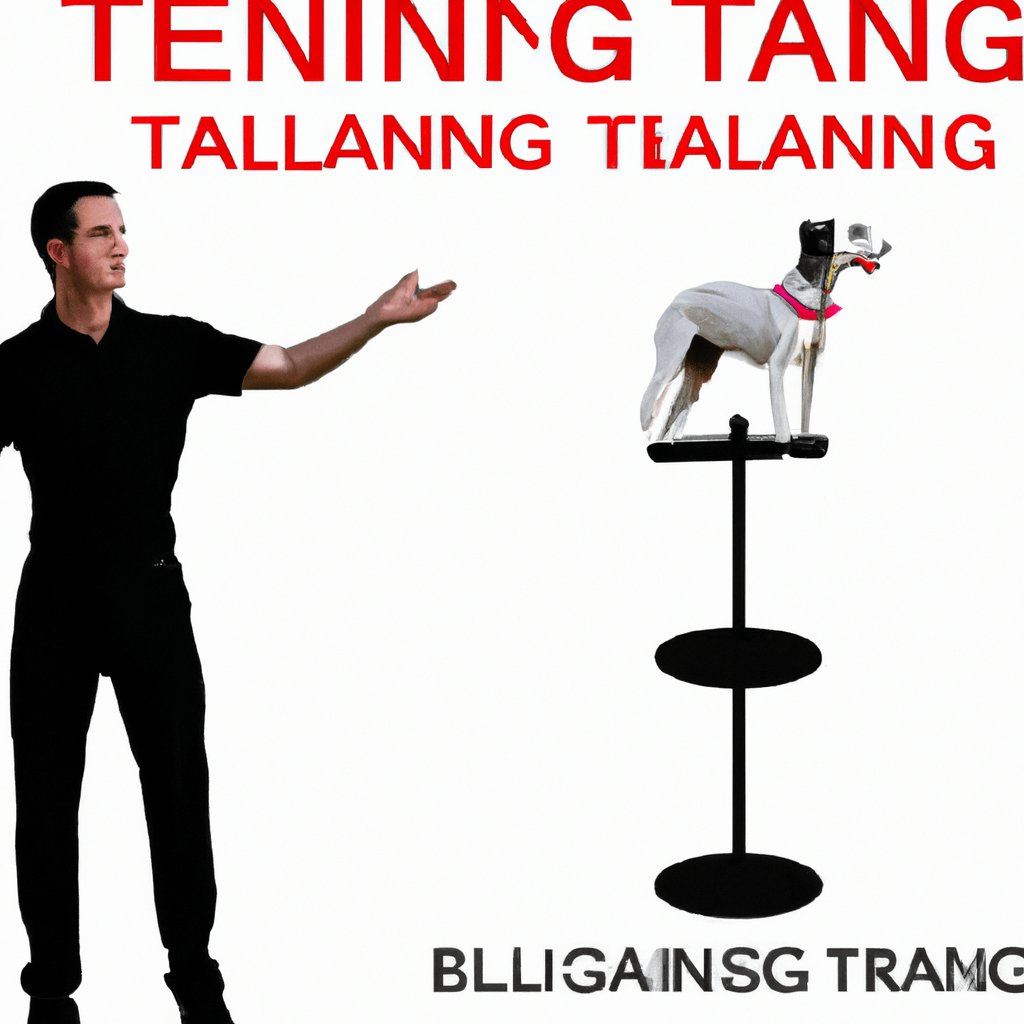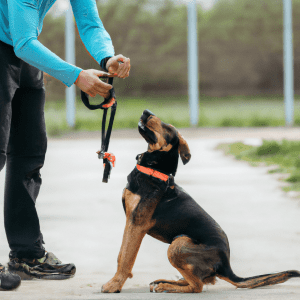what is a balanced dog trainer?
A balanced dog trainer is a professional who creates a successful training program for a canine that takes into account the animal’s individual needs and personality. Balanced dog trainers use humane and effective methods to train dogs, taking into account their physical and psychological needs.
They also focus on building a strong bond between the dog and its owner. Balanced dog trainers are able to recognize the signs of stress in the animal and modify their approach accordingly. They strive to create a positive learning environment, utilizing reward-based training techniques that are both effective and kind.
Understanding Positive Reinforcement Training and Its Benefits for Balanced Dog Trainers
Positive reinforcement training is a popular and effective form of dog training that can help establish a strong bond between a pet and its owner. It also helps to create an environment of trust and understanding between the two.
This type of training utilizes rewards, such as treats and praise, to encourage desired behaviors and discourage unwanted ones. Positive reinforcement training is based on the concept of operant conditioning.
This is a type of learning that occurs when an animal receives a reward for a desired behavior. This reward reinforces the behavior, making it more likely that the animal will repeat it in the future.
As a result, the animal develops a positive association with the behavior, which motivates them to repeat the behavior in order to receive the reward. One of the biggest advantages of positive reinforcement training is that it can be used to train dogs of all ages and sizes.
It can be used to teach basic obedience commands, as well as more complex behaviors. It also helps to create a bond between the pet and its owner, as it allows the owner to reward the pet for good behavior.
Another benefit of positive reinforcement training is that it can help to create a balanced dog. Many people mistakenly believe that dogs need to be “alpha” in order to be well-behaved, but this is not true.
In fact, using positive reinforcement to reward desired behaviors and discourage unwanted ones helps to create a balanced dog that is well-behaved and obedient. Overall, positive reinforcement training is a popular and effective form of dog training that has many benefits for both the pet and its owner.
It helps to create a strong bond between the two, as well as encouraging desired behaviors and discouraging unwanted ones. Balanced dog trainers can use positive reinforcement to help create a well-behaved and obedient pet.
Components of Balanced Dog Training: Combining Positive Reinforcement with Discipline
Balanced dog training is a method of dog training that combines positive reinforcement with discipline. This approach, also known as ‘positive punishment’, is designed to help dogs understand and obey commands, be well-behaved, and remain safe and happy in their environment.
Positive reinforcement is the cornerstone of balanced dog training. This method relies on rewarding the animal with treats, verbal praise, and extra attention whenever they display desired behaviors.
Positive reinforcement teaches the animal to recognize and repeat behaviors that have been rewarded in the past. At the same time, balanced dog training also involves providing the dog with guidance and structure.
This includes setting expectations and boundaries. For example, owners may provide verbal cues and commands, such as “sit” or “stay”, to help the dog understand what is expected of them.
If the animal does not obey these commands, the owner may use a corrective measure such as a firm “no” or a time-out. These disciplinary actions are used to reinforce positive behaviors and discourage negative ones.
Balanced dog training is a proven method for teaching dogs good behavior and obedience. By combining positive reinforcement with discipline, owners can help their pets learn to obey commands, stay safe, and remain healthy and happy.
The Benefits of Clicker Training for Balanced Dog Trainers
Clicker training is a popular and effective method of dog training. This technique provides a balanced approach to dog training that emphasizes positive reinforcement. It is a great way to train and bond with your pet, as well as teach them new behaviors. Here are some of the benefits of clicker training for balanced dog trainers.
- Quick and Easy to Learn – Clicker training is relatively quick and easy to learn. The basics of the technique involve using a clicker to reward desirable behaviors. This method is also easy to remember and can be implemented right away.
- Effective – Clicker training is an effective way to teach your dog the behaviors you want. The clicker acts as a marker that can be used to pinpoint the exact moment a desired behavior was performed, allowing the dog to quickly learn what is expected of them.
- Positive Reinforcement – Clicker training focuses on positive reinforcement, which is a great way to build a bond between you and your pet. By rewarding desired behaviors with treats and other rewards, your dog will learn faster and be more likely to repeat desired behaviors.
- Flexibility – Clicker training is very flexible and can be used to teach a variety of behaviors. It can be used to teach basic obedience commands, tricks, and even more complex behaviors such as agility.
- Fun – Clicker training is a fun way to interact with your dog. It is a great way to bond with your pet, and can even be used to play games. Clicker training is a great tool for balanced dog trainers, as it provides an effective and fun way to teach your dog new behaviors.
It is a great way to bond with your pet and teach them the behaviors you want. If you are looking for an effective and enjoyable way to train your dog, clicker training may be the right choice for you.
The Role of Praise and Reward in Balanced Dog Training
Praise and reward are essential components of balanced dog training. When used correctly, they can help to create a trusting, respectful, and positive relationship between the trainer and the dog.
Praise is a verbal form of communication that conveys positive reinforcement to the dog. It is a key tool in motivating the dog to engage in desired behaviors and to stay focused on the task at hand.
Praise should be used liberally and should be sincere and specific. It is important to use words that the dog understands, such as “good boy” or “good girl”. The trainer should also make sure to praise the dog immediately after the desired behavior has been completed.
This helps to reinforce the good behavior and encourages the dog to repeat it. In addition to praise, rewards can also be used to reinforce desired behaviors. Rewards can be anything that the dog finds valuable, such as a treat, a favorite toy, or a game of tug.
The reward should be given immediately after the desired behavior has been completed. This will help to reinforce the behavior and make it more likely that the dog will repeat it. When used correctly, praise and reward can be powerful tools in balanced dog training.
They help to create a positive and trusting relationship between the trainer and the dog, and they can help the dog to stay focused and engaged in the training process.
Socialization Techniques for Balanced Dog Trainers
Balanced dog training is a method of teaching canine behavioral skills that emphasizes positive reinforcement and relationship-building. It is based on the idea that dogs can be trained to respond to rewards, rather than punishment or fear.
Socialization is an important part of balanced dog training, as it helps build a strong bond between dog and handler. Here are some techniques to help balanced dog trainers socialize their canine companions:
- Begin socialization early. Puppies are most receptive to new experiences between six and sixteen weeks of age, so it’s important to start socialization as early as possible. Be sure to introduce your puppy to new people, animals, and environments in a safe, low-stress manner.
- Use positive reinforcement. Reward your puppy with treats, praise, and affection whenever they interact with new people or animals. This will help them associate positive experiences with socialization.
- Introduce new items and experiences gradually. Start with small, low-stress experiences and work up to more challenging ones. This will help your puppy get used to new items and experiences without becoming overwhelmed.
- Practice desensitization. If your puppy is scared or anxious about certain items or experiences, gradually expose them to the item or experience in a safe, low-stress manner until they become accustomed to it.
- Enroll in classes. Taking your puppy to a training class or organized activity can help them become more comfortable in social situations. It will also give you the opportunity to practice socialization techniques with the guidance of an experienced professional.
These techniques can help balanced dog trainers socialize their canine companions in a healthy, positive way. With patience and practice, you can help your puppy become confident and well-behaved in any environment.
Understanding Aggression in Dogs and How to Address It Using Balanced Training Methods
Aggression in dogs is a complex behavior that can range from minor warning signs to full-blown attacks. It can be caused by a range of things, such as fear, anxiety, frustration, or even dominance.
Whatever the source of the aggression, it is important to address it using balanced training methods that allow you to effectively manage the behavior without causing harm or fear to the dog.
The first step in addressing aggression in dogs is understanding why the behavior is happening. Fear-based aggression is often a result of the dog feeling threatened and is typically expressed through barking, growling, or lunging.
Anxiety-based aggression is often linked to insecurity and may be directed at a person or object the dog perceives as a threat. Dominance-based aggression is the result of a dog trying to assert its position in the pack and is usually expressed through growling, snapping, or physical contact.
Once you understand why the aggression is occurring, you can begin to work on addressing it. The most effective way to do this is through balanced training methods that focus on positive reinforcement.
Positive reinforcement involves rewarding the dog for desired behaviors and ignoring or redirecting undesired behaviors. For example, if a dog is growling at another dog, you can reward it for sitting calmly and ignoring the other dog.
This will reinforce the desired behavior and help the dog learn that it will get a reward for calm behavior rather than aggression. It is also important to be consistent with your training so the dog knows what is expected.
Set up a routine and schedule and make sure to stick to it. This will help the dog learn what behavior will be rewarded and what will not be tolerated. Finally, it is important to be patient when working on aggression. Aggression can be a difficult behavior to address, and it may take time and consistency before you see any real improvement.
Remember to be patient and consistent, and never use punishment or force. Aggression in dogs can be a difficult behavior to manage, but with patience, consistency, and the right training methods, you can help your dog learn to manage their aggression and live happily.
By understanding why the aggression is happening and using balanced training methods, such as positive reinforcement, you can help your dog learn to manage their aggression and live happily.
A balanced dog trainer is someone who is knowledgeable and experienced in positive reinforcement, reward-based training, and canine behavior. They are patient, consistent, and consistent with their approach to training, and they never use punishment or intimidation as training methods.
Balanced dog trainers have a deep understanding of how dogs think and learn, and they strive to create a trusting, respectful relationship with their canine companions. They also have the ability to adapt their training techniques to the individual needs and personalities of each dog. Ultimately, balanced dog trainers are dedicated to helping dogs reach their full potential.




